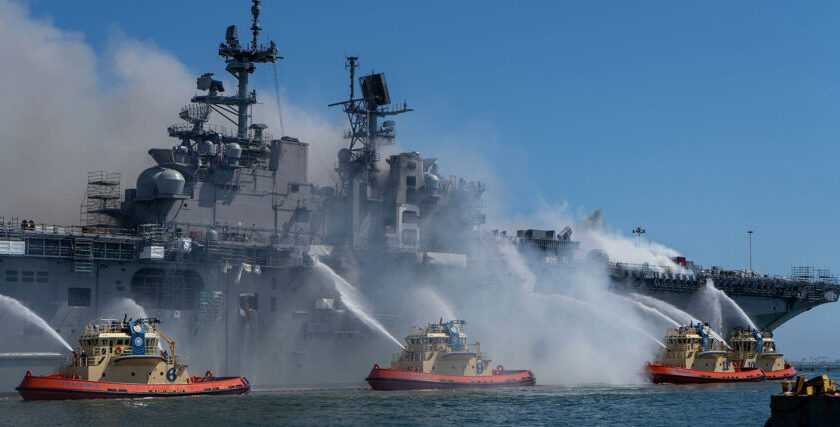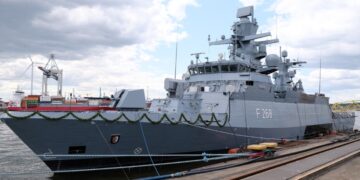How the US Navy learns lessons from the Bonhomme Richard disaster
The fire on the Bonhomme Richard in July 2020 was so devastating that the amphibious ship had to be decommissioned in April 2021 (Marineforum reported)
The consequences and lessons learnt from this disaster are evidently more far-reaching than initially assumed. The capabilities for assessing and repairing battle damage are being revised, because what do you need to survive in a war against highly developed opponents?

Rear Admiral Eric Ver Hage. Photo: US Navy
Rear Adm. Eric Ver Hage, commander of the Navy's Regional Maintenance Centre, said the Navy is even using the burned-out hull of the former amphibious assault ship Bonhomme Richard for this work. Damage assessment is being practised in a new way. The ship became even more useful on its journey to be scrapped, with diving and salvage personnel and surveyors on board to document and inspect it. This should not be a one-off event, said the admiral. The point is to learn lessons for a war scenario. Repairs should become feasible - an urgent need in the event that a ship is damaged during a war and has to return to battle.
The destroyers Fitzgerald and John S. McCain, which were not damaged in battle but were each involved in separate collisions, serve as examples of how long ships can take to repair. The McCain was towed back to her home port of Yokosuka and repaired on site, which took about 23 months. The Fitzgerald was more badly damaged and was towed to Ingalls Shipbuilding in Mississippi - one of the two shipyards that build the Arleigh Burke destroyers. For the repairs, the ship had to be lifted ashore to rebuild parts of the ship. This took about 25 months.
It's about the availability of infrastructure such as dry docks, but also about the labour force and its skills. Currently, the US Navy does not have enough capacity. There is not enough maintenance capacity for routine work, let alone urgent work due to battle damage or accidents, such as the collision of the fast attack submarine Connecticut with an underwater berg in the South China Sea in October. Quote from Rear Adm. Eric Ver Hage: "Our repair capacities are fully utilised, we are operating at full throttle. If I get into a conflict where I have to repair numerous ships at the same time, I don't have enough capacity. I don't have enough dry docks and I don't have enough shipyards to do it," he added. "So it's a problem in wartime and a problem in peacetime when we have something unplanned."
Source: www.defensenews.com/ Megan Eckstein












0 Kommentare